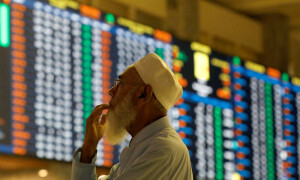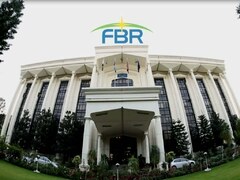LONDON: Riskier currencies such as the commodity-linked Australian dollar, Canadian dollar and the Norwegian crown fell to multi-week lows against the US dollar on Thursday, as souring risk sentiment in global markets boosted the greenback.
Falling stock markets in the United States on Wednesday, in Asia overnight, and in Europe on Thursday contributed to a shift in sentiment.
By 1138 GMT, the dollar edged 0.05% higher against a basket of currencies.
It gained against the Aussie, which lost as much as 0.8% to 75.92 US cents, its lowest level against the buck since Dec. 29.
The neighbouring New Zealand dollar, or Kiwi - fell half a percent to 71.22 US cents.
The Canadian dollar, or ‘loonie’, hit its lowest levels in a month, weakening to as much as 1.286 per US dollar.
Norway’s crown slumped to its lowest in five weeks at 8.7286 per dollar, falling as much as 0.8% in London trade.
Analysts note that some of the optimism around vaccines fuelling a recovery in the global economy has evaporated, given that several countries, especially some in Europe, have been slow to roll them out and have faced problems doing so.
The European Union, which is far behind the United States, China and Britain in deploying a vaccine, demanded AstraZeneca spell out how it would supply the bloc with reserved doses of COVID-19 vaccine from plants in Europe and Britain.
“The story of weakness in the European recovery continues,” said Lars Sparresø Merklin, senior analyst at Danske Bank.
“A shortfall in vaccines is now at centre stage and risk aversion to European assets from earlier in the week has spread to global assets. The USD has been the natural winner.”
There were also expectations of more dour economic news, with data expected to show the US economy likely contracted at its sharpest pace since World War Two in 2020 as COVID-19.
The Commerce Department’s snapshot of fourth-quarter gross domestic product on Thursday is also expected to show the recovery from the pandemic losing steam as the year wound down amid a resurgence in coronavirus infections and exhaustion of nearly $3 trillion in relief money from the government.
The Federal Reserve on Wednesday left its benchmark overnight interest rate near zero and pledged to continue injecting money into the economy through bond purchases, noting that “the pace of the recovery in economic activity and employment has moderated in recent months.”
Despite the rise in the dollar however, analysts still remain bearish on the currency.
“Market noise may persist a bit longer, but we remain positive on risk assets overall and bearish USD over time, with the Fed as an important driver,” strategists at CitiFX said in a note to clients.
Across the pond, the euro hovered around the $1.21 mark, last down 0.1% on the day after hitting its lowest in over a week against the dollar on Wednesday.
European Central Bank (ECB) policymakers have stepped up their mentions of the euro in recent weeks, with the most recent comments indicating that the ECB could even cut its deposit rate to check the strength of the continent’s shared currency.
“We don’t expect the recent verbal interventions to do much damage to the euro as (a) the market is already pricing c.70% probability of a 10basis point rate cut within a year, and (b) there is not much else the ECB can do beyond the already partially priced-in rate cut,” ING strategists said in a note.
Sterling fell 0.2% to $1.3664.



























Comments
Comments are closed.